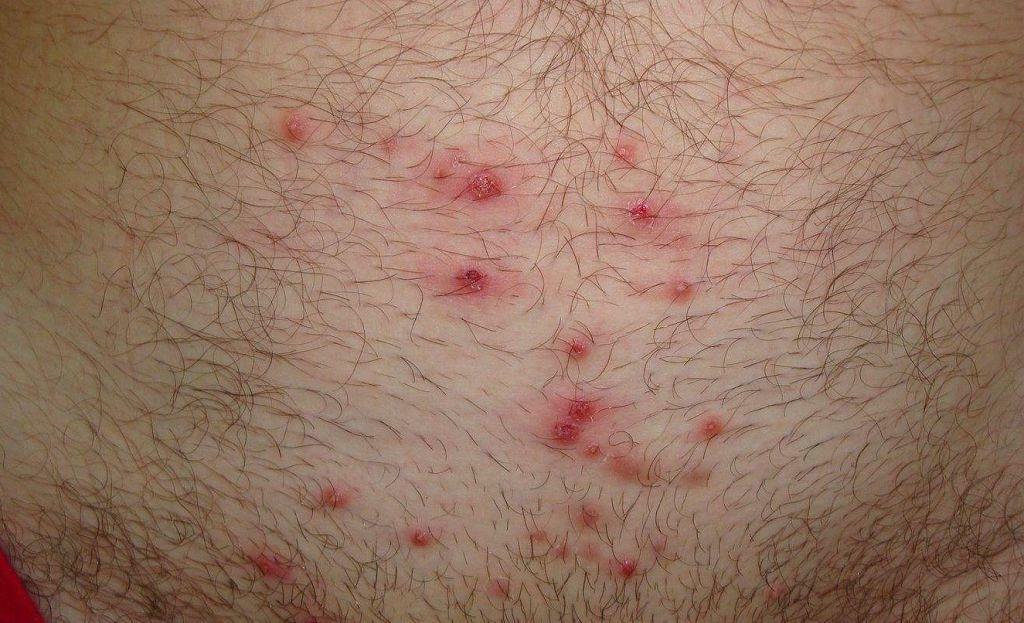Listeriosis - an infectious disease characterized by a primary lesion of lymphoid tissues and the nervous system, the development of specific entities in the organs (mainly in the liver).
The disease is characterized by a variety of clinical manifestations, may occur in two forms: acquired and congenital.
The causative agent of listeriosis - Listeria - presented short sticks and coccobacilli. Bacteria are mobile, perform typical tumbling motion.
Listeria stable in the environment at moderate and low temperatures persist in the soil and even proliferate during the months and years. Feed grain stored up to three years long exist and multiply in the meat and milk at 4-6 ° C. When boiling die within 3-5 minutes; not resistant to the action of disinfectants.
Listeria is widespread. The main natural reservoir - various animals and birds. Excreted sick animal pathogen is excreted with urine, feces, nasal discharge, milk, amniotic fluid. Main path listeriosis infection: contact, through the skin and mucous membranes (for animal care, cutting carcases); through food; through the air (when working with feed); vertical (by mother's birth canal).
Most listeriosis Affected population: infants (39-50% of all cases), and the elderly.
symptoms of listeriosis
acquired listeriosis
The incubation period - 2-4 weeks.
The major clinical forms: anginal, eye-glandular, typhoid, listeriosis nervous system.
- Anginal (mononucleosis) has the following form listeriosis manifestations: fever, loss of appetite, headache, General weakness, angina, Swollen lymph nodes.
- Eye-glandular form develops the penetration of Listeria through the conjunctiva ( "swimmers disease") and is characterized by fever, loss of appetite, headache pain, general weakness, swelling and redness of the eyelids, eye narrowing of the gap, purulent discharge in the corner of the eye, increase in size and tenderness of the lymph nodes.
- Typhoid form has listeriosis manifestations such as prolonged fever; rash from spotty to sinyachkovoy; sore throat and conjunctivitis no. Typhoid form of listeriosis usually occurs in immunocompromised children and also in neonates and infants. Listeriosis nervous system can take place in the form of meningitis encephalitis, Meningoencephalitis. During heavy. After this illness possible residual effects in the form of mental disorders, neurodevelopmental development of paralysis. The most common form of listeriosis in adults.
congenital listeriosis
Fetal infection may occur both in utero at any stage of pregnancy (but not before the 5 th week) and during childbirth. Therefore, the outcome of infection may be different: spontaneous abortion, Stillbirth, birth of children with developmental disabilities - with the defeat of the fetus in the first half of pregnancy; or the birth of a child with congenital listeriosis - during later infection.
Congenital listeriosis - one of the most severe cases of infection, with high risk of death.
Clinical manifestations of congenital listeriosis are not specific. There are:
- high fever
- violation of appetite (refusal to feed)
- regurgitation or vomiting
- lethargy, confusion
- heart rate variation
- cyanosis, "marble" skin
- nodular rash (bumps), or speckled sinyachkovaya
- liver damage (jaundice)
- meningitis and meningoencephalitis (excitation or depression of consciousness).
Diagnostics
Microscopy and isolation of the causative agent. Materials for the study - the blood, cerebrospinal fluid, mucus from the throat, enlarged lymph nodes material; the newborn extra - meconium umbilical blood.
treatment of listeriosis
- Bed rest, restriction of physical activity;
- Isolation of the patient;
- Tetracycline antibiotics of 0.2-0.3 g after 6 hours. for 7-10 days.
In meningitis -. Benzylpenicillin 000-100 75 000 IU / kg / every 4 h, drug overturned after 2 weeks. after normalization of body temperature; tobramycin to 2 mg / kg / every 8 h., the formulations after 4 weeks cancel. after normalization of body temperature. When the eye-glandular listeriosis - erythromycin 30 mg / kg / day. inwardly in 4 divided doses, drug overturned after 1 week. after normalization of body temperature;
Alternative formulations: cotrimoxazole 5 mg / kg trimethoprim / every 6 hours, clarithromycin, ciprofloxacin..
Forecast
In 30% of cases of listeriosis (60% of them - patients with immunodeficiency) - lethal outcome.
The article was written based on the reference information MGMU them. Sechenov



